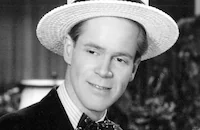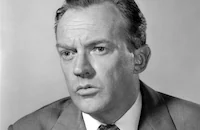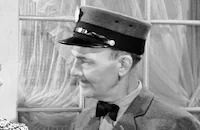Too Late For Tears

Brief Synopsis
Cast & Crew
Byron Haskin
Lizabeth Scott
Don Defore
Dan Duryea
Arthur Kennedy
Kristine Miller
Film Details
Technical Specs

Synopsis
A married woman's discovery of stolen money changes her character for the worse.

Director

Byron Haskin
Cast

Lizabeth Scott

Don Defore

Dan Duryea

Arthur Kennedy

Kristine Miller
Barry Kelley
Denver Pyle
Kenny O'morrison
Robert Bice
Richard Irving
Jimmie Dodd

George K. Mann
Harry Vejar
June Storey
Jimmy Ames
Jim Nolan

John Butler
Smoki Whitfield

William Halop
David Clarke
Charles Flynn
George Backus
John Mansfield
Garry Owen

Gregg Barton
Billy Wayne
Robert Kellard
Perry Ivins
Alex Montoya
Robert E. Neff
Renee Donatt
Carl Thompson
Jack Shea
Virginia Mullen
Patricia Wallace
Crew
Ben Bishop
Dale Butts
Earl Crain Sr.
Peggy Gray
Hap Hodges
Roy Huggins
Harry Keller
Herb Kirkpatrick
Howard Lydecker
Theodore Lydecker
Mickey Marigold
Bob Mark
John Mccarthy Jr.
William Mellor
Dick Moder
Adele Palmer
Lou Rosso
Morton Scott
Howard Smit
Bob Sterling
Hunt Stromberg
Hunt Stromberg
James Sullivan
Charles Thompson
Marvin Weldon
Howard Wilson

Photo Collections
Videos
Movie Clip



Hosted Intro



Film Details
Technical Specs

Articles
Too Late for Tears
Indeed, Dan Duryea is also a pleasure for fans of film noir, with his blond mane and oily, scheming, deliciously evil characters popping up over and over again in films of the style. In this picture, Lizabeth Scott and Arthur Kennedy play a married couple who get more than they bargained for when a bag containing $60,000 is tossed into the back seat of their car by a passing motorist. Kennedy wants to turn it in, Scott wants to keep it, and Duryea soon turns up as a blackmailer for whom the money was actually intended. Scott turns in one of film noir's most entertaining bad-girl performances, whose greed will let her stop at nothing to keep the dough--even, of course, murder.
Released by United Artists, Too Late for Tears was produced by Hunt Stromberg, who had once been a prominent in-house producer at MGM but who in recent years had been making films independently. For this production, Stromberg worked hard to cobble together cast, crew, financing and even the property itself from various sources. The screenplay was by a relative newcomer, Roy Huggins, adapted from his own Saturday Evening Post serial. (Years later, Huggins would create the TV shows Maverick and The Fugitive, among many other famous credits.) Stromberg acquired the script from another independent producer, Milton Sperling, then made a deal with yet a third, Hal Wallis, to borrow Haskin, Scott, Kennedy, and supporting actor Don DeFore, all of whom were under contract to Wallis.
Meanwhile, Stromberg made an unusual deal with Republic Pictures to provide studio facilities and financing. Republic was effectively producing the film for United Artists to release, even though Republic was a distributor itself. For its services, Republic participated heavily in profit-sharing.
Stromberg originally wasn't prepared to spend the money to hire Dan Duryea, but Haskin insisted upon it and went the extra mile to free up some money for that purpose. As he later recounted, Haskin coordinated with the production manager to eliminate some of the production design and decor budget: "He and I went around to the sets and cut enough non-essentials to save $40,000 in no time, which was plenty to make up the difference in what they were going to pay, and what Dan Duryea was asking."
The resulting movie did well at the box office and drew overall positive reviews. Variety declared the "picture suffers from a contrived plot which never entirely rings true and from over-writing, but basic idea is so novel and intriguing to pop imagination that it counterbalances all defects and maintains audience interest." The New York Times said "this yarn about a cash-hungry dame who doesn't let men or conscience stand in her way is an adult and generally suspenseful adventure... Scott is a taut, seductive, husky-voiced schemer who is fascinatingly convincing in a completely unsympathetic role. Dan Duryea adds another excellent and familiar portrait to his gallery of tough mugs."
Half a century after its release, Too Late for Tears was on the verge of becoming a lost film. It had fallen into the public domain, which meant that existing prints were in terrible shape and fly-by-night home video distributors had flooded the market with awful-looking copies. It also meant, as UCLA Film & Television Archive preservationist Steve MacQueen put it, that there was "no one with a vested interest in putting resources into saving such a film -- no one except organizations like the Film Noir Foundation and film archives."
Film Noir Foundation president Eddie Muller spent five years as the driving force to restore the film, which he described as "the best unknown American film noir of the classic era." Muller discovered that the original negative had long since been lost, so he set about searching for the best copies of the film still out there that the UCLA restoration team could use as sources. In the end, after some false leads--and in an echo of how producer Hunt Stromberg had cobbled together the film itself--Muller found three viable source materials: a 1949 nitrate French composite dupe negative, a 1955 reissue print that was already decomposing, and a 16mm television print. Finding these sources was tricky in and of itself, as the French negative was catalogued under the title La Tigresse and the 1955 print was listed under an alternate title, Killer Bait. But UCLA was able to use the best pieces of all these sources to create a fresh negative from which new 35mm prints could be struck. The restoration was funded by the Film Noir Foundation with additional funding from the Hollywood Foreign Press Association's Charitable Trust.
On January 25, 2014, the restored Too Late for Tears had its "re-premiere" at San Francisco's Noir City film festival. It has played in other festivals since then, and in the summer of 2015, it made its debut on TCM.
By Jeremy Arnold

Too Late for Tears
Quotes
Trivia
Notes
The working title of the film was Too Many Tears. Roy Huggins' novel was serialized in The Saturday Evening Post (19 April-24 May 1947). According to a New York Times news item dated June 6, 1948, Hunt Stromberg's deal to produce this film was to be "unique in Republic's history, since Republic, itself, is a distributing company and yet it will, in effect, be producing a picture for U.A. release." Stromberg borrowed Lizabeth Scott, Kristine Miller, Don Defore and director Byron Haskin from independent producer Hal Wallis for the production. In June 1948, Daily Variety reported that Wendell Corey and Kirk Douglas were scheduled to appear in the cast, but they did not appear in the released film. Hollywood Reporter production charts add John Bromfield to the cast, but he was not in the released film.














